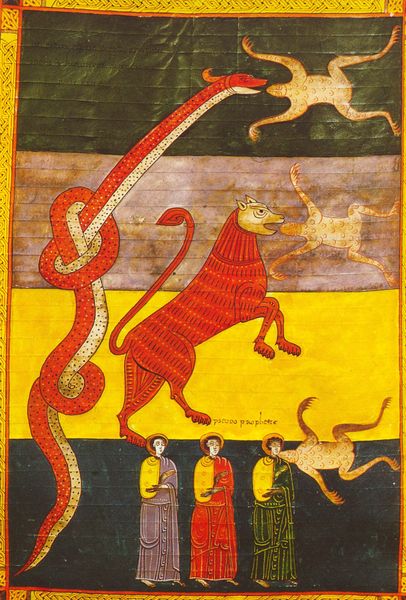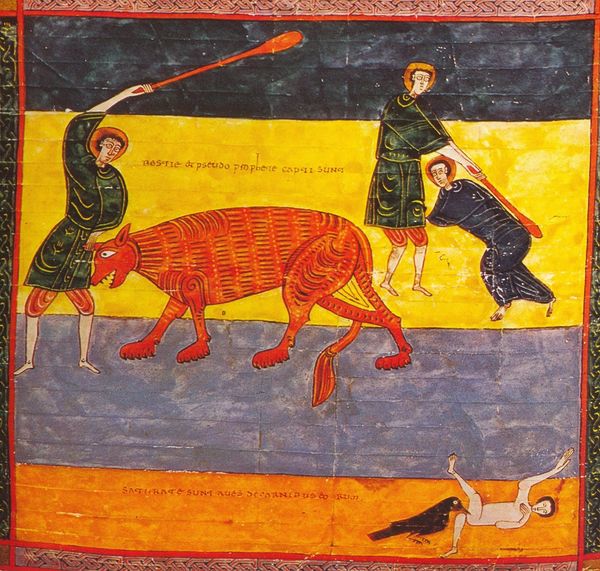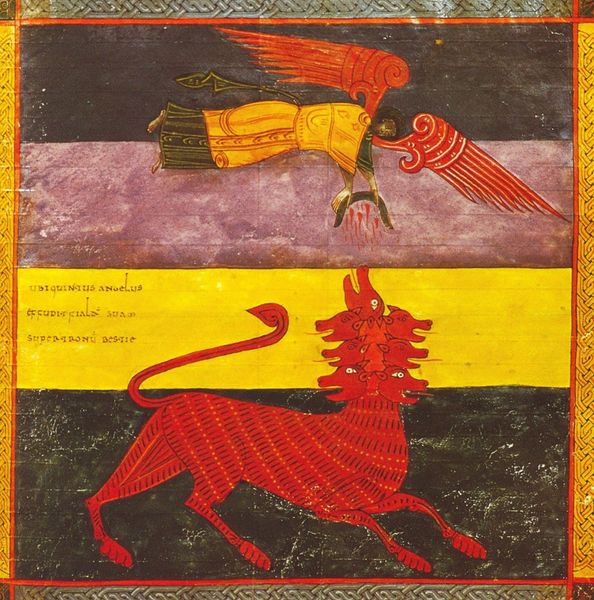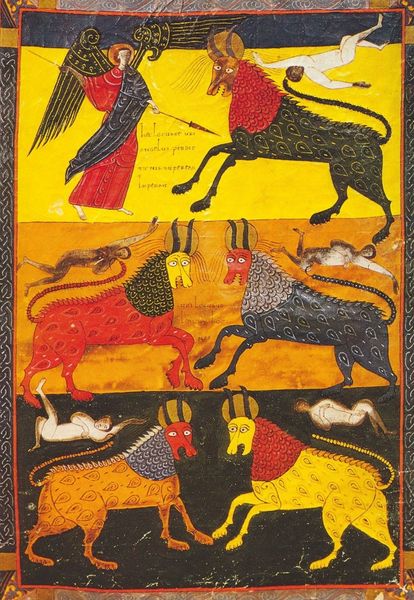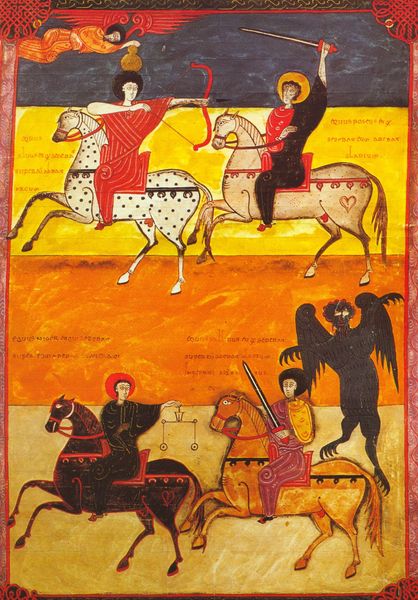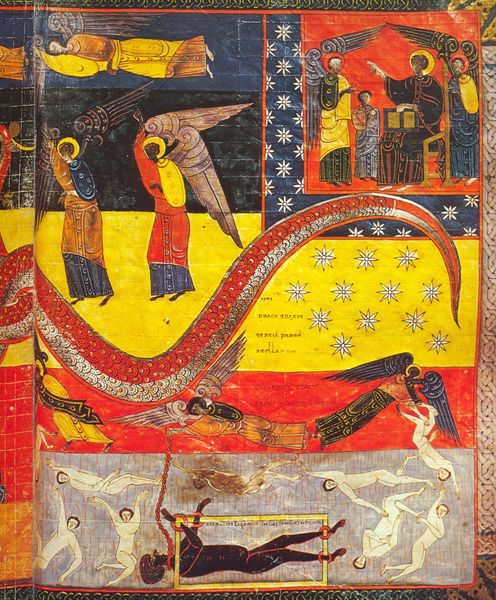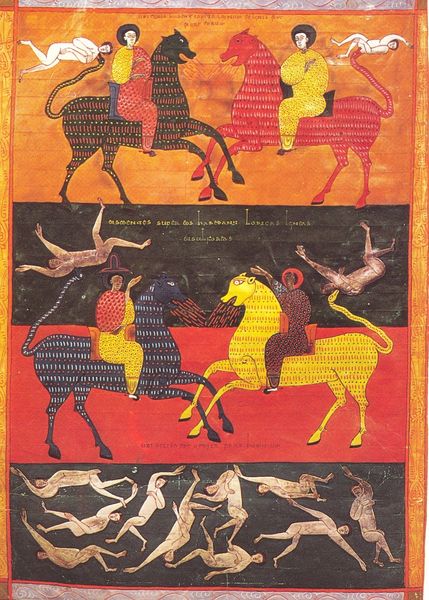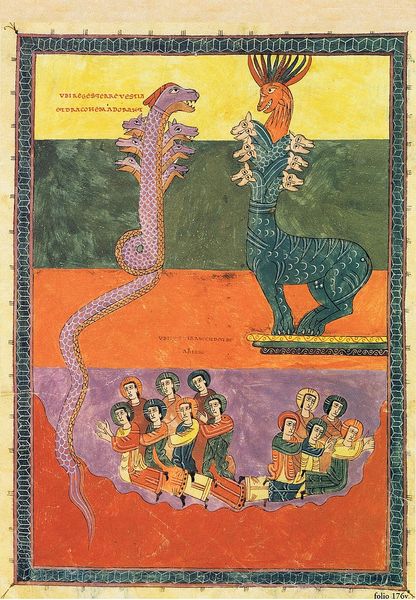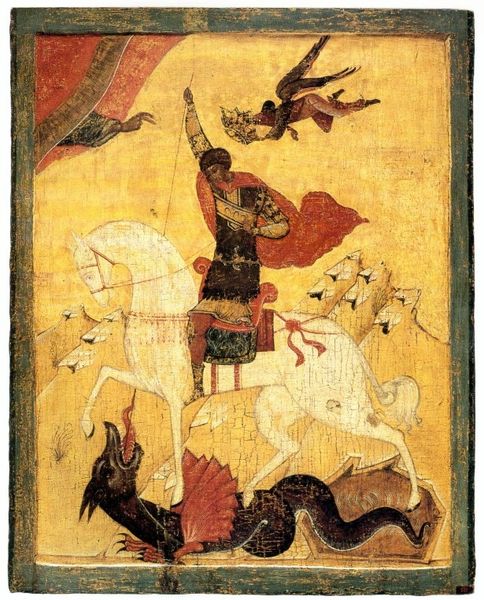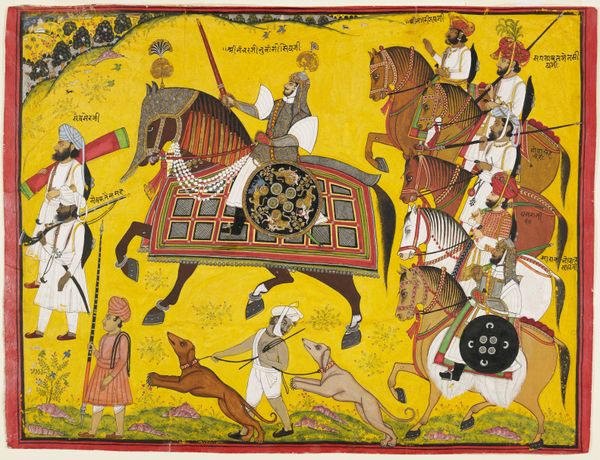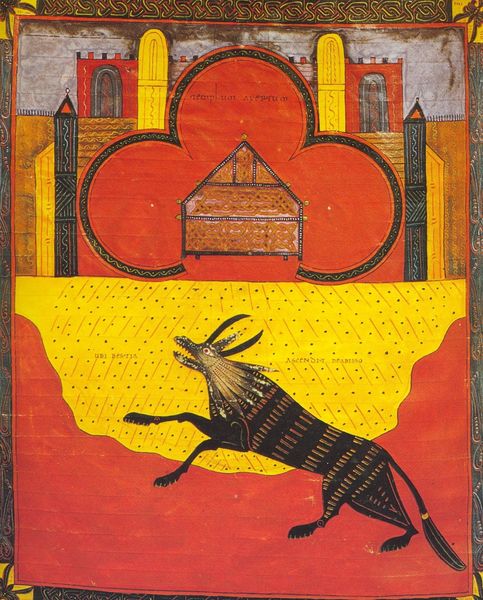
tempera, painting
#
medieval
#
allegory
#
narrative-art
#
tempera
#
painting
#
figuration
#
romanesque
#
oil painting
#
painting art
Copyright: Public domain
"La Femme sur la Bête", or "Woman on the Beast," was created around 1050 by the artist Facundus, using tempera on parchment. It’s a complex image, made with painstaking detail, and clearly intended for the enjoyment of a wealthy patron. Medieval illuminated manuscripts like this one were incredibly labor-intensive. The parchment itself, made from animal skin, would have been costly and time-consuming to prepare. The grinding of pigments, and the precise application of paint with fine brushes required enormous skill. Notice the patterned garments of the woman, and the beast. These aren't just decorative; they speak to the value placed on intricate craftsmanship. The materiality of the image, then, reflects the social context in which it was made, where skilled handwork was a signifier of status and wealth. In a world before mechanical reproduction, images like this were precious commodities, showcasing the intertwined relationship between labor, materials, and social power. The artist's hand is evident in every detail, reminding us of the human effort behind the creation.
Comments
No comments
Be the first to comment and join the conversation on the ultimate creative platform.
